The corn plant might be the most useful item growing in your garden right now. It is simple to grow and pick, a bit of a time-consuming pain to preserve, and offers the chance to use not just the yield from the plant, but the entire plant itself around your homestead.
If you grew up gardening like I did, it is likely mom or grandma handed you a sack and some freshly picked corn and told you to get shucking every harvest season.
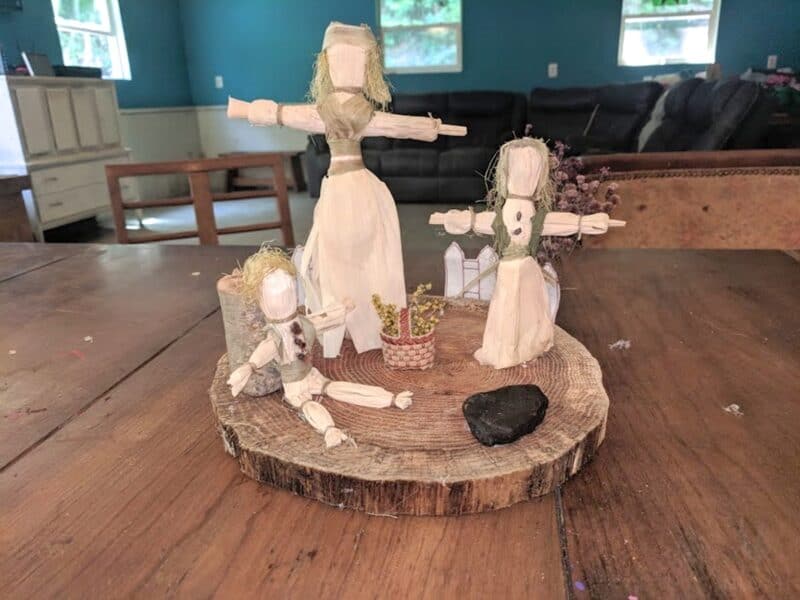
Remember all of those sticky and clingy silks inside the corn husks? Well, they are not only great to use to make doll hair for corn husk dolls, they actually boast medicine benefits, as well.
Until this year, I must have thrown away hundreds of pounds of corn silks, at least. I now have the first of many batches drying in a DIY solar oven and in our dehydrators.
The key to getting silks pulled off the corn and out of the husk quickly and easily is picking during the 3-peak days of freshness.
The little spindly silks come up in a nice clump with just a simple tug or two, leaving your corn only need an equally rapid swipe with a slightly dampened rag to rid itself of the unwanted floss-like matter.
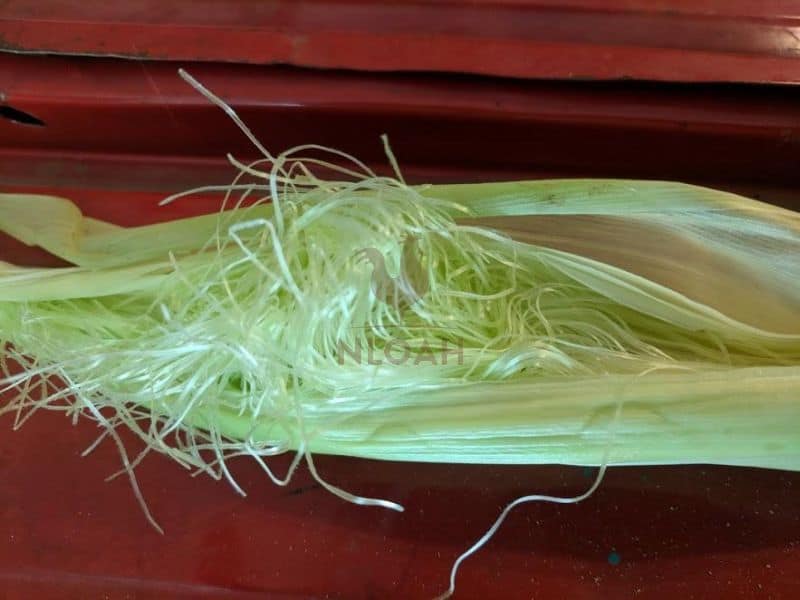
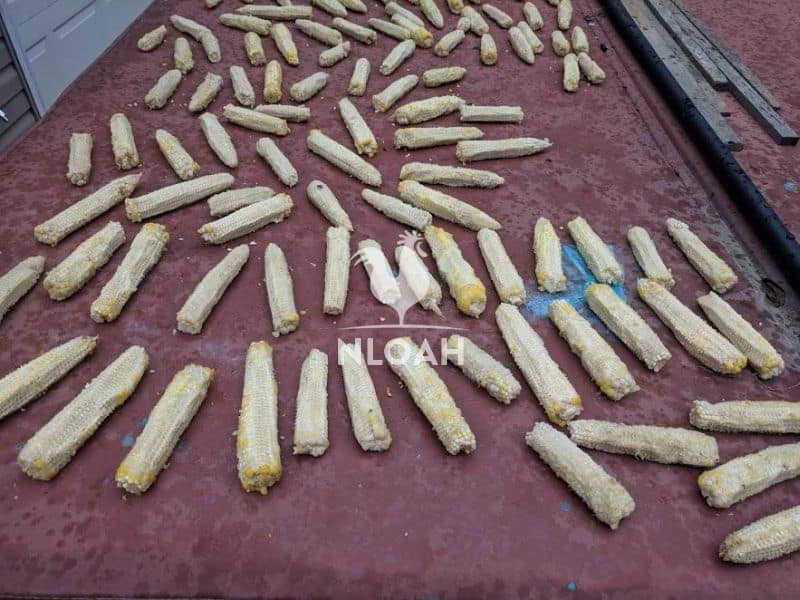
Corn Cobs
There is no reason to relegate corn cobs just to your compost bin anymore. There are plenty of livestock that will happily enjoy them and they make superb fall craft and gift ideas.
You could make a beautiful Thanksgiving table display out of not much more than the natural bounty provided by the corn plant.
Corn Cobs and Livestock
Some animals, like hogs and pigs, can safely eat corn cobs. Both sheep and goats – ruminants just like cattle, can consume corn cobs if they have been chopped up into smaller bits, first.
Dogs and horses cannot eat the cobs because it will cause them to choke (often to death) and get stuck in their intestinal tract.
Corn Cob Crafts
Dip the entire cob in plain or scented wax and sprinkle cinnamon and crushed cloves on them before the wax dries to use in fragrant fall holiday displays or just tossed into a decorative basket on top of some attractive bed of dried corn husks.
• You can also follow the same scented wax or plain wax coating process but first chop the corn cob into three pieces and paint them in primitive or fall colors to create a more decorative display.
• Corn cob wreaths using just the cobs, or cobs surrounded by dried corn husks, flowers made out of dried corn husks, or use scented wax and/or painted corn cobs to make a sweet smelling and natural beautiful wreath to hang inside or out.
• Corn cob primitive dolls are a slightly different take on the more well known corn husk dolls.
• Corn cob pipes could be made as part of a decorative display or for actual use.
• You could also use the corn cobs to make little bird feeders – a great craft to do with the kiddos. Simply roll the dried corn cob in peanut butter and then roll it in birdseed. Craft a simple wire hanger using sturdy but bendable wire that is poked into both sides of the corn cob to hold it into place. The corn cob bird feeder be hung from a tree branch using baling twine or string.
• Corn Cob paint “brushes” are great fun if you have little ones in the home. Simple roll the corn cob into paint and allow your little helpers to roll it onto paper or wood to make patterns and designs. If you want to cut down on the mess, but corn skewers into both sides of the cob for the children to use as handles.
• Corn cob decorations do not have to be just for fall. Paint the dried cobs and mount them to a small branch that is screwed into a wooden platform to make a rustic tree. You can also screw just one cob into a wood plant and paint in green to resemble a Christmas tree to go with a Nativity Scene made out of corn husk dolls.
• Some clever folks even find a yummy use for corn cobs when making jelly.
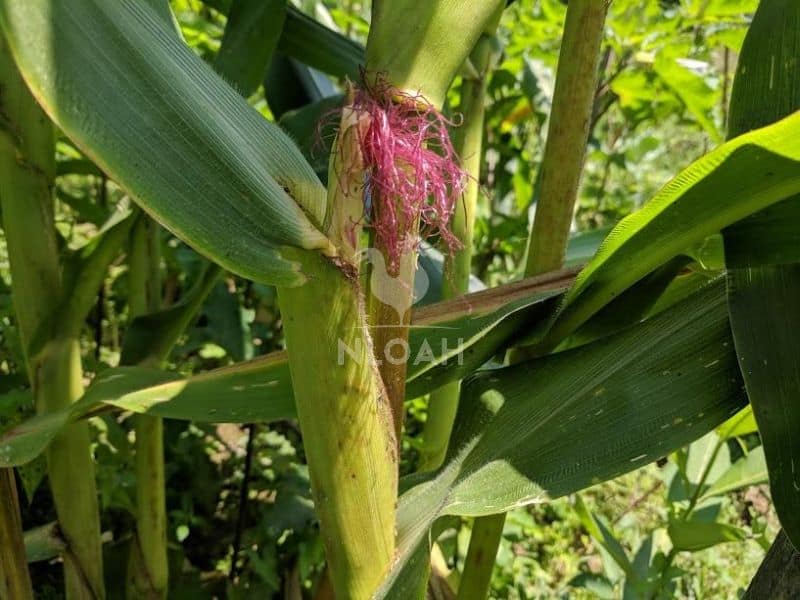
Corn Stalks Uses
The stalks your corn was growing on has two primary uses – livestock treats and decorations.
While your farm dog and barn cat are not likely to jump for joy when you tell them corn stalks are on the snack menu, the rest of your meat and egg producing critters will.
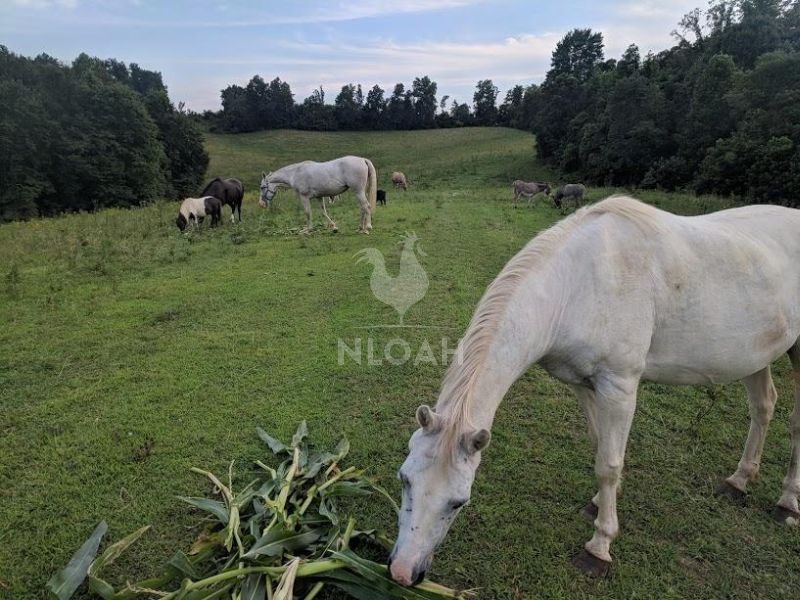
Horses, cows, goats, sheep, hogs, and even chickens will dive right into the corn stalks when you deliver them to the pasture or barn. They will be equally excited about their treat whether it is fresh from the garden or has been dried to preserve the bounty longer.
Make certain to look over the stalks carefully before giving them out as a treat. It is not difficult to miss an underdeveloped ear of corn that did not get picked during the harvest.
How to cut corn stalks:
Decorative Uses For Corn Stalks
• Corn stalks can be dried and attached to a small to medium branch with twine to look like a primitive broom.
• Corn stalks can be tied together with a decorative ribbon or twine and placed in a corn as part of an outdoor fall display alongside pumpkins and gourds.
• Tie some corn stalks around an exterior light pile or porch pillar and then attach festive seasonal flowers and raffia or corn shucks ribbons to them to both help hold them in place and to create a pleasing natural country decorative display.
• If you are incredibly talented, patience, have ample time on your hands and LOTS of corn stalks you could make large animal shapes out of the corn plant leavings to adorn your front yard.
Corn Husk Uses
Before using corn husks for any type of craft project, they must be dried completely. If you separate the corn husks from the corn silks, they can be fed to any common barnyard livestock. The animals typically prefer the husks to be relatively fresh, but will dine on dried husks, as well.
Drying corn husks in an oven rapidly speeds up the process. You can also dry husks in a dehydrator, but some of the husks will be very bulky and might not fit adequately in between the trays.
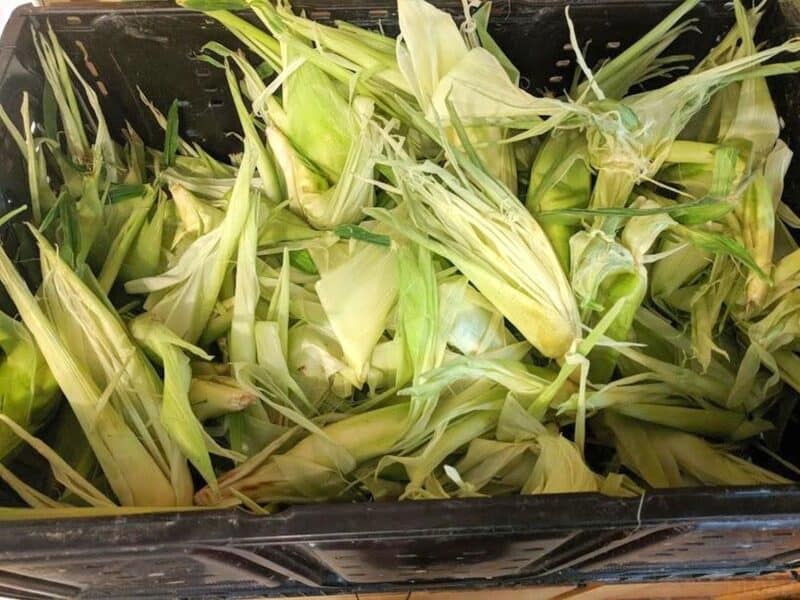
Corn husks can be dried in the good old-fashioned sunshine. You must bring the corn husks in at night or any time it rains or becomes exceptionally damp outdoors. It typically takes seven to 10 days, at least, of warm weather exposure to dry thoroughly dry corn husks in the sun.
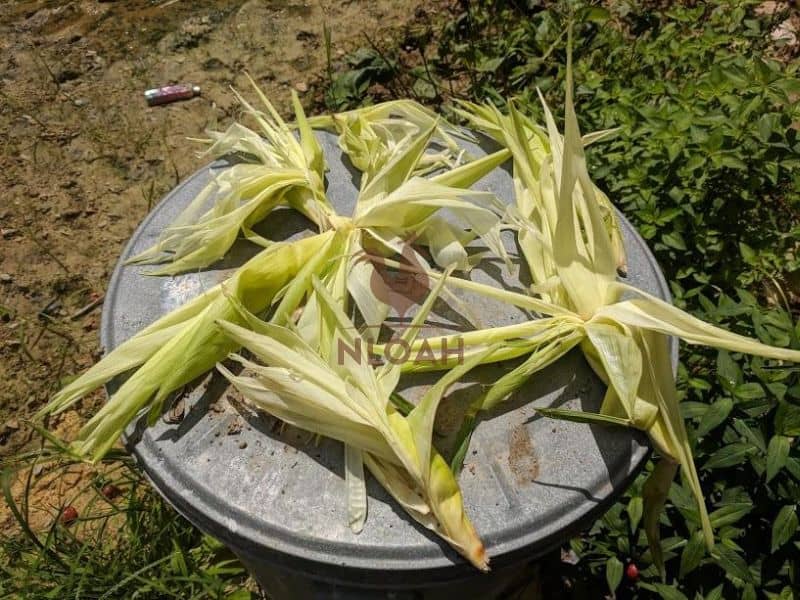
If you choose to hang dry the corn husks indoors or out, expect the process to take about four to six weeks.
Always prop the oven door open slightly when drying corn husks. The recommended amount of space is only about an inch. Never use plastic, wooden, or fabric material as an oven door prop.
As you can see in the photo below, I used a metal canning funnel to keep my oven door propped open. Because my oven only goes as low as 170 degrees, I always prop my door open slightly wider than recommended to prevent scorching…or a house fire.
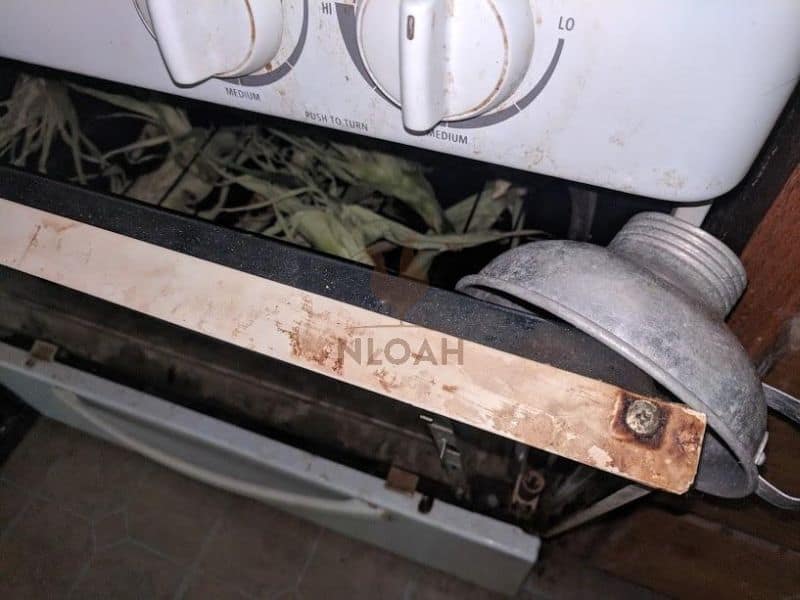
This is how oven dried corn husks look after about 60 minutes:
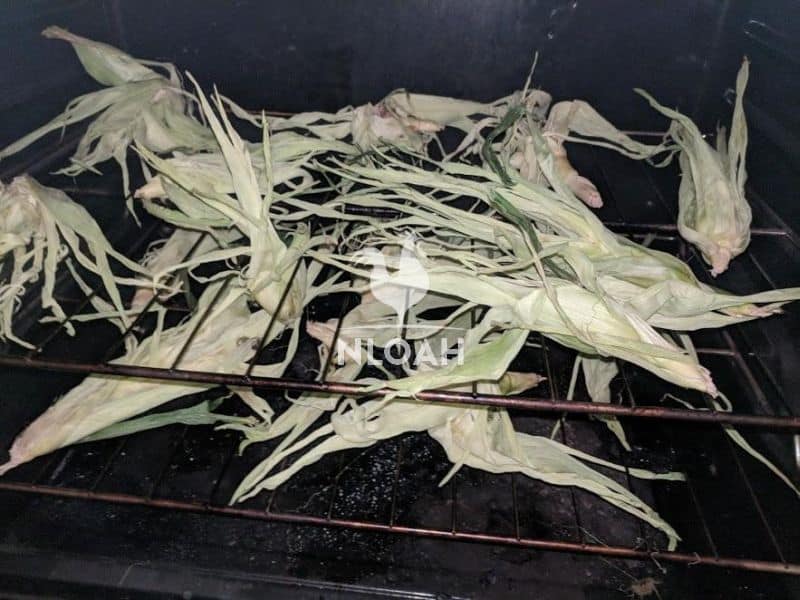
How To Make Corn Silk Tea
Munching down on corn silks to garner their medicinal benefits really isn’t advised. They just are not really palatable to the human body. Making the tea is simple and easy and will help you get the highest level of possible benefit from the leavings on corn plants.
Corn silks are sold in powdered form online and in health food stores, but they tend to be rather pricey.
Recipe #1
Ingredients
• Corn silks – either fresh or dried
• Water
• Optional – Lemon Juice or Honey
* Use the corn silks at a 1 to 3 ratio with the water
Directions
1. Bring the water to a rolling boil.
2. Drop the corn silks into the boiling water.
3. Allow the mixture to boil and steep for 2 or three minutes – it will look a caramel color when it is done.
4. Strain the corn silks from the boiling water and serve as either a hot or a cold tea.
5. Drop a little bit of lemon juice or honey into the medicinal corn silk tea to improve the bland taste. The tea can typically be kept in a refrigerator for several days.
Recipe #2
Ingredients
• Water
• Corn Silks – dried and chopped
• Honey and/or lemon juice
*Use a 1 corn silk to 3 water ratio when making the tea
Directions
1. Put the water and the corn silks into a glass or a glass sun tea style container.
2. Put the glass outside in a sunny spot for an entire day – depending upon the weather.
3. Stir the mixture and pour in up to a tablespoon or either honey or lemon, or a mixture of both. The tea can be served chilled or hot straight from the sun. This corn silk tea should also keep in the refrigerator for several days.
Corn Silk Warnings
• Although corn silk tea has been safely consumed by both children and adults for centuries, some negative health issues are always possible.
• Frequent consumption of corn silk tea could cause potassium levels in the blood stream to actually reduce and prompt both an allergic reaction and skin issues.
• Pregnant and breastfeeding women has consumed corn silk tea in “moderate
Amounts without issue, but drinking the tea in large amounts could cause an overstimulated uterus or a miscarriage to occur.
• If you are taking some types of medications, corn silk tea could negatively interact with them, especially if the medication was prescribed to treat diabetes, causing blood sugar levels to nosedive.
• Corn silk tea might also reduce the effectiveness of blood thinning medications.
Corn Husk Crafts And Decorations
Corn Husk Dolls
Corn husk dolls range from the simplistic type pioneer and Native American children used to play with, to high-end and large decorative style of dolls.
Traditional corn husk dolls did not have facial features. How the doll looks is entirely up to the creator. The dolls can have “skirts” made out of extra pieces of corn husk, either in the same color or pieces that have been dipped in RIT dye or painted, and scrap pieces of felt and material used to make clothing, aprons, and bonnets.
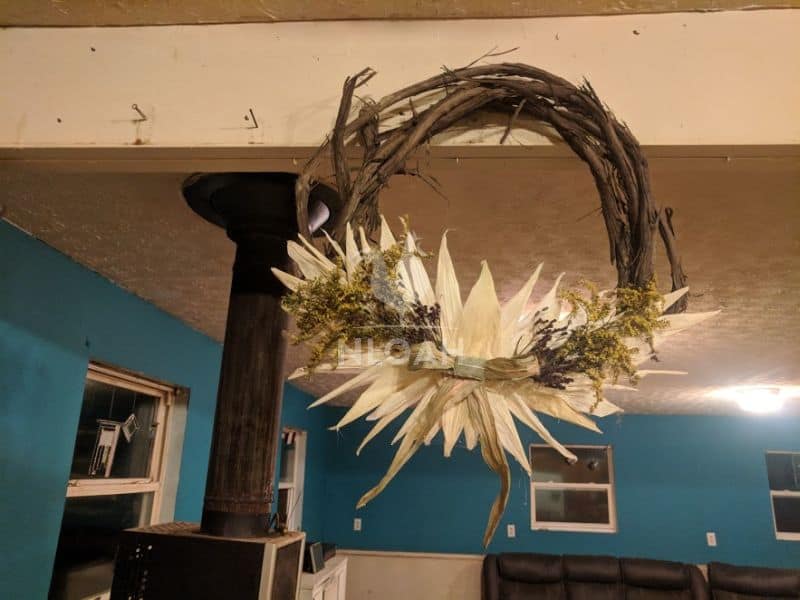
Corn Husk Wreaths
Natural corn husks can be used to make a beautifully simple and stunning wreath. There are simply hundreds of different ways you could create a wreath with corn husks.
Some folks dye the corn husks, or paint the, to create fall and even Christmas themed displays. Adding corn husk flowers or dried flowers or any type, to the wreaths is also a wonderful way to display the leavings from your garden.
When stored properly in a dry place, a corn husk wreath will not only be preserved enough to last for many years, it can grow even more beautiful with age!
If you have a lot of grapevine growing on your homestead like I do, make a grapevine wreath, add a bow made out of corn husks, and attach some corn husk dolls to the center of the wreath for added flare.
Corn Husk Flowers
Making corn husk flowers is just easy as making the dolls or a wreath. The flowers can be wrapped around a scented wax corn cob, added to a wreath, or affixed to a doll as a costume embellishment – or affixed to any basket or table display piece for increased natural beauty.
Corn Husk Paint Brushes
Tie some short corn husks together with a rubber band and some twine and let the children create a masterpiece with the natural paintbrush.
Corn Husk Candles
Wrap some corn husks around a Mason jar or glass votive, in any direction you choose and tie them in place with some twine. Although many folks use a wax candle inside the glass holder, due to the extremely flammable nature, it might be best to use a battery-powered or solar-powered candle – especially if the corn husks reach near the top of the jar.
Corn husk Dying And Decorating Tips
• Always soak corn husks in Lukewarm water for about 25 minutes to make them more pliable when making dolls or more complicated crafts.
• If you want the ends of the corn husks to feature a bend, curl, or swirl, briefly and on low heat, curl the tip with a hair curling iron. Allow the corn husk to cool completely before attaching it to additional corn husks, a wreath, or other craft to vastly reduce the chances of starting a fire.
• To dye corn husks, mix RIT dye in a non-metallic bow at a 1 cup of warm water to 2 teaspoons of dye ratio. The corn husks only need to soak for about 1 minute before you remove them and place them on metal drying racks or wax paper to dry. The corn husks can be used when they are slightly damp and more pliable, they do not need to be completely dry to use – just make sure the dye has set and will not bleed on the rest of your project.
• To paint corn husks, acrylic craft paints seems to work work best. They coat the husks thoroughly yet do not saturate them so much that they either fall apart or take far too long to dry.
• Hot glue will generally firmly affix corn husks either to themselves or other common crafting supplies. I highly recommend using a low temperature hot glue gun to avoid the chance of the glue becoming so hot that it “burns” a hole through the dried husks. I have also successfully used E600 glue to work on craft projects, it only takes a little dab to hold corn husks in place.
Check out my homemade gifts inspiration board on Pinterest for some awesome corn husk wreath, doll, and flower ideas.
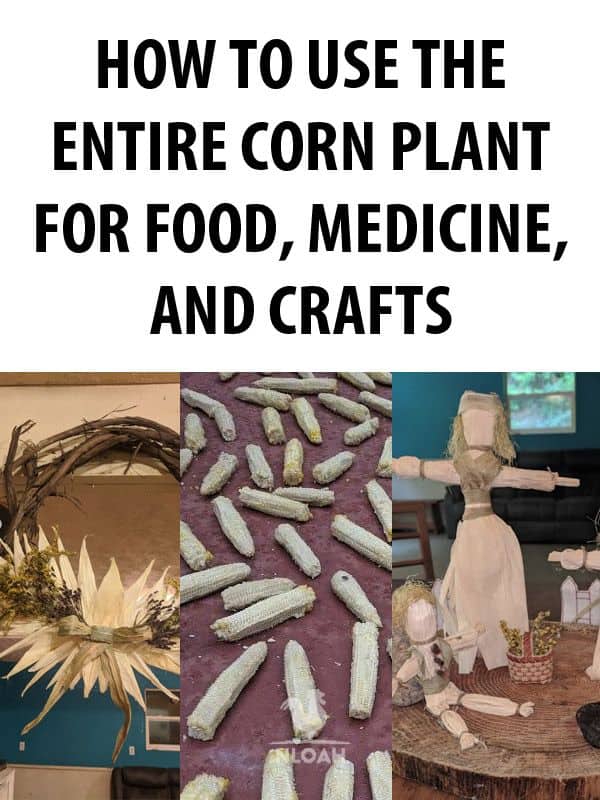

Tara lives on a 56 acres farm in the Appalachian Mountains, where she faces homesteading and farming challenges every single day, raising chickens, goats, horses, and tons of vegetables. She’s an expert in all sorts of homesteading skills such as hide tanning, doll making, tree tapping, and many more.

If you are canning or freezing sweet corn, you probably blanch the ears before cutting off the kernels. Don’t throw out that blanching water–put the stripped cobs back in and simmer them for a while. The resulting “stock” can be used as the added liquid for canning. It can also be canned in its own right to be used as a vegetable stock for soups and stews–and can even be strained and made into corn cob jelly!